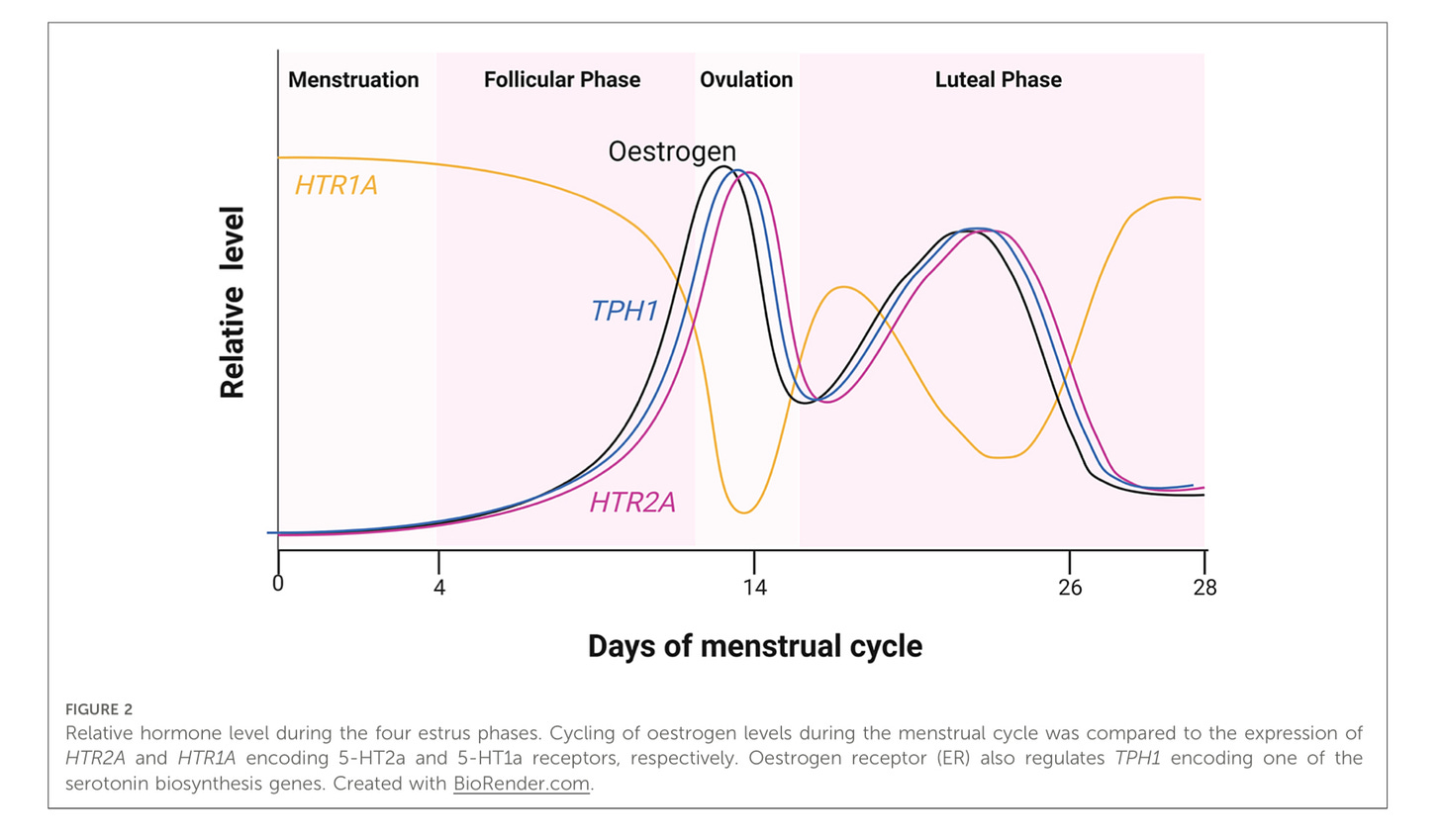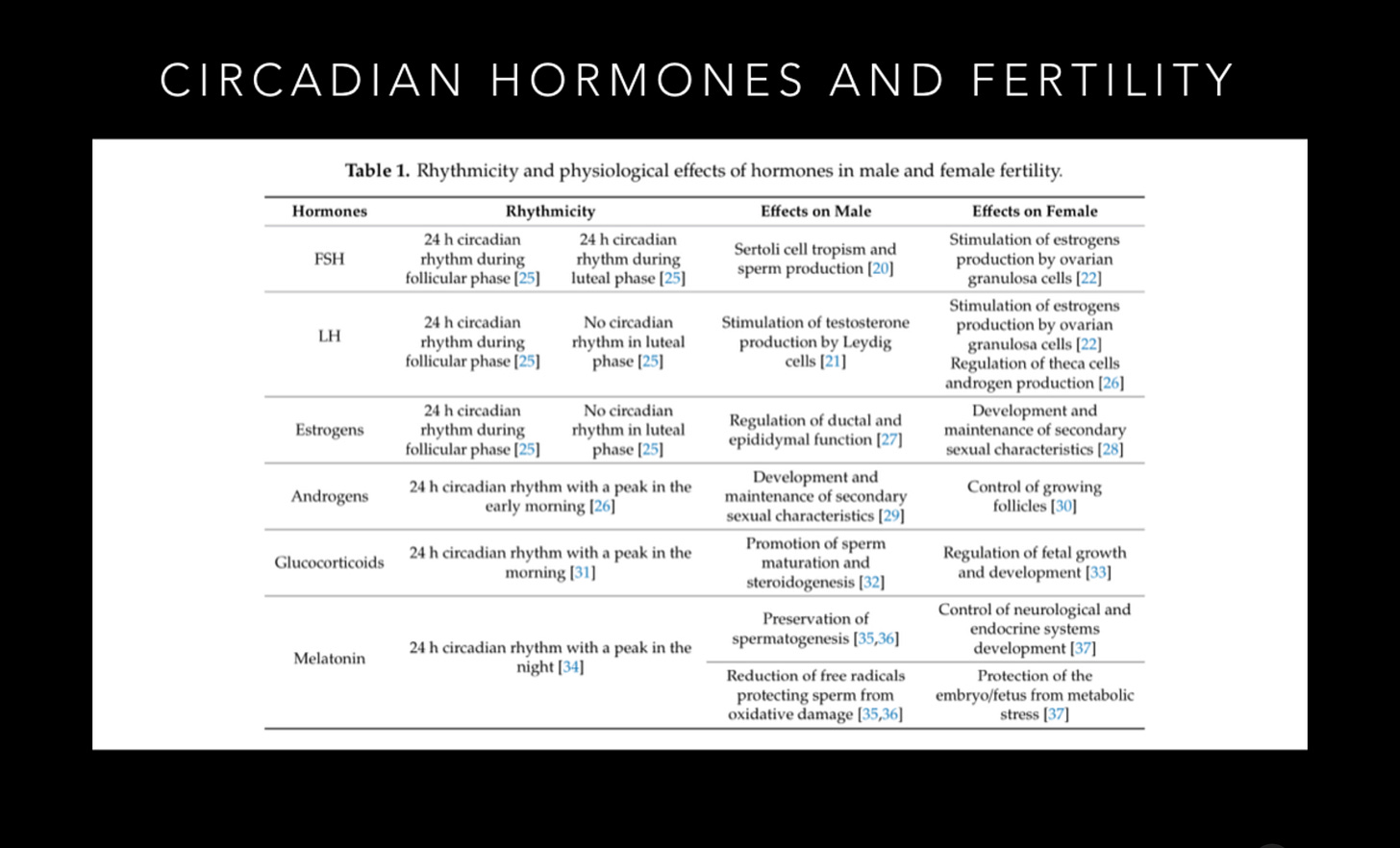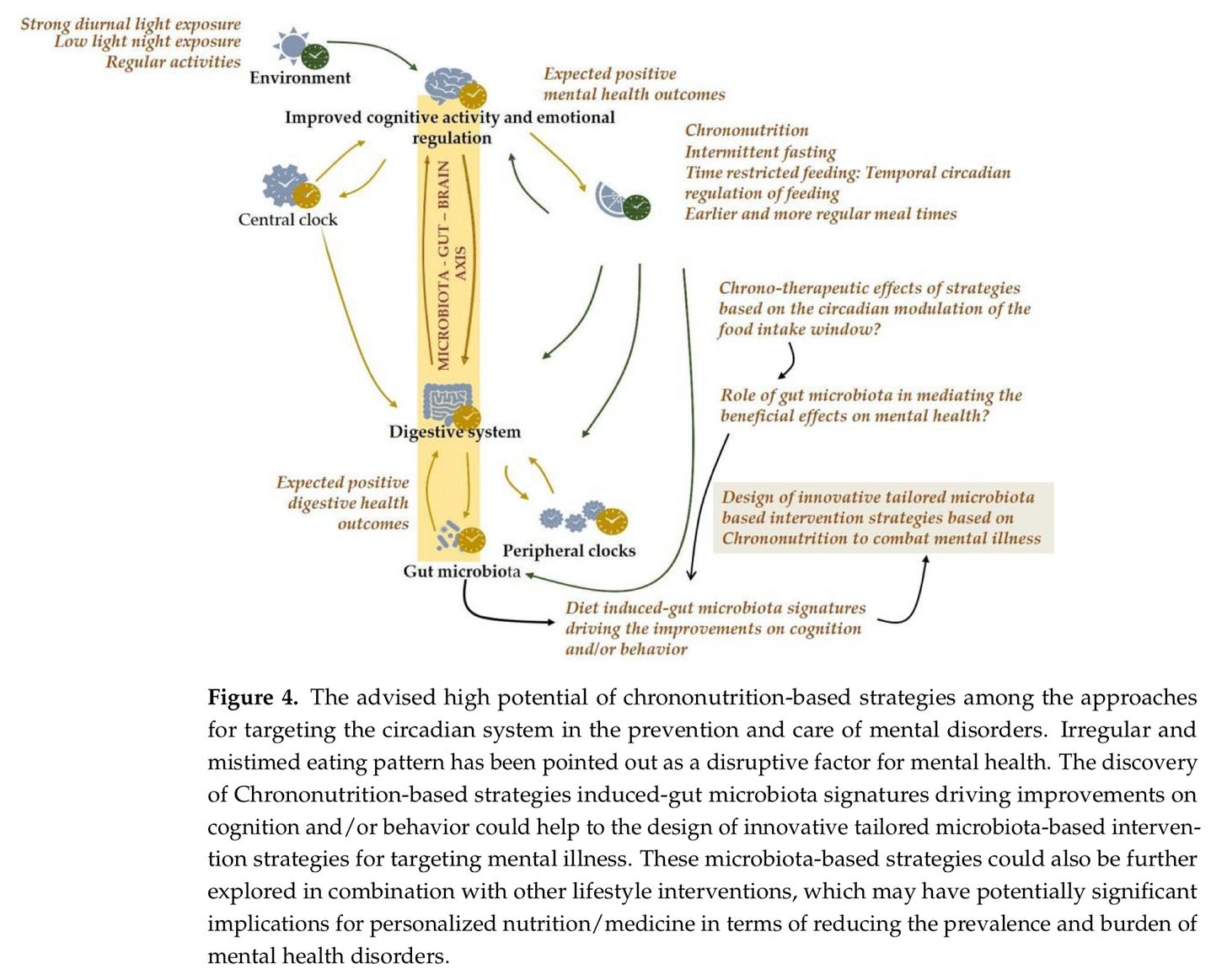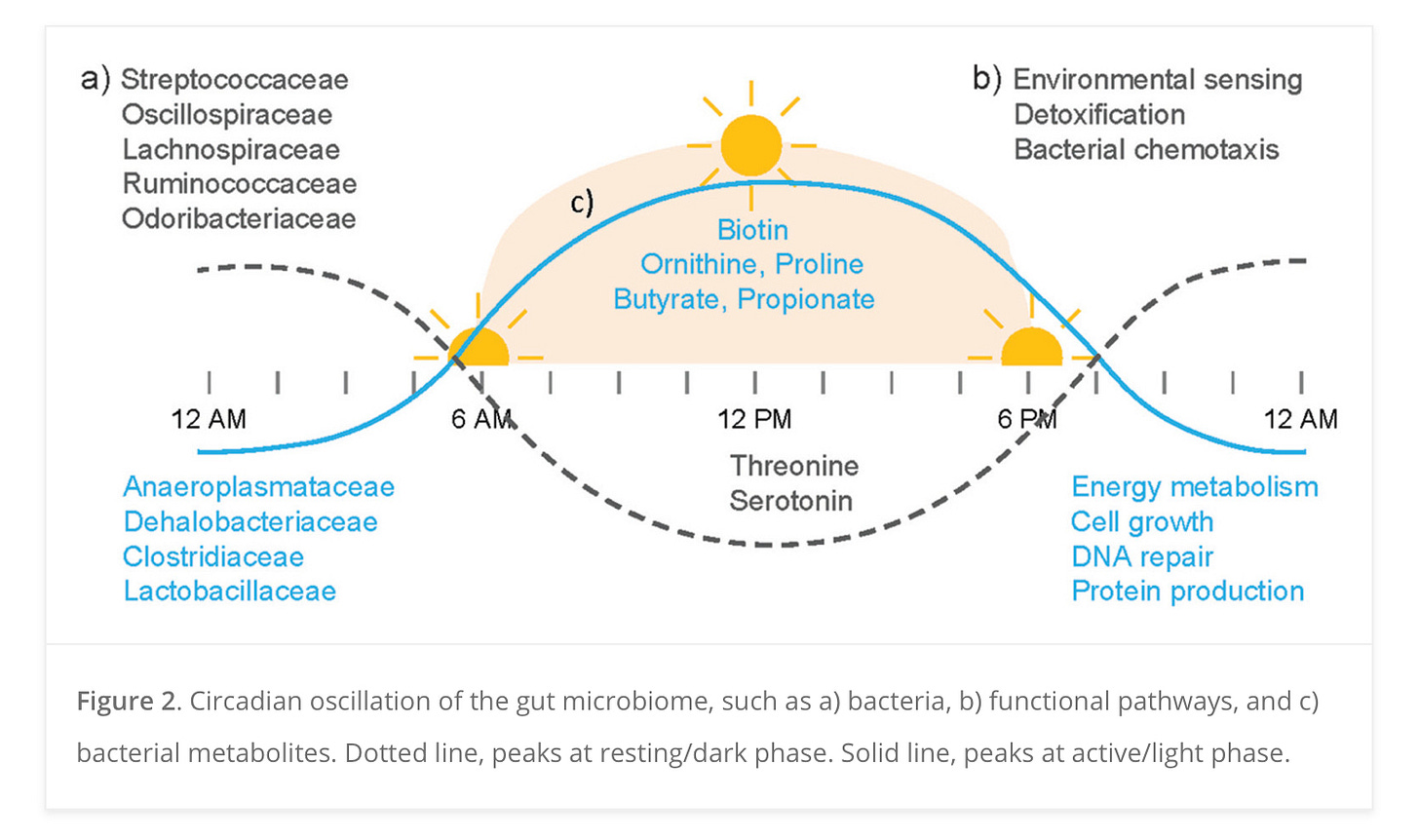Importance of the female circadian rhythm
Look to daily circadian rhythms for the origins of all other endocrine rhythms

Dear social media influencers: please stop saying women don’t have a 24 hour cycle.
I can believe there may be some well-intentioned people who have picked up on this meme of men = daily and women = monthly, and just don’t realize
a) how incorrect it is because they probably just heard it and thought it made sense
b) what a huge detriment it is for women to neglect their daily circadian health or for men to neglect their longer term cycles
In this post, I’m going to dig in on this concept and show that women do indeed have daily cycles that they must tend if they want to have a healthy monthly rhythm.
My relationship to the idea of men being daily and women being monthly
I used to just ignore the claims about women needing to follow a different flow than men because yes, in a sense, it can be helpful.
There are energetic differences across the menstrual cycle—you can see them in any chart of female hormones. I particularly like this one because it also shows serotonin expression—pointing to one of our current key challenges of understanding how to address mood disorders and avoid the worse adverse outcomes associated with women on SSRIs compared to men on SSRIs1.
At any rate, this whole men = daily, women = monthly seemed like a fairly harmless generalization geared at helping women take more rest through the more restful stages of the menstrual cycle—which I totally support.
But then a woman interviewing me for her podcast surprised me by saying something along the lines of “Oh, this is all so interesting because I have been tuning out every time I hear anything “circadian” because I thought that was only for men!”
And then another woman said the same thing in a consultation.
And another.
And these were women who were struggling with the very things circadian health is best for, like metabolic health, cycle regularity, fertility!
This is when I realized this meme of men being daily but women being only monthly was actually blinding women to the truth of their own biology—all under the guise of empowerment!
To set the record straight, the latest human research is leaning towards the belief that women actually have more circadian clock gene expression than men do!
The clock structure was conserved across sexes and age groups. However, overall gene expression rhythms were highly sex-dimorphic and more sustained in females2.
Circadian disruption is actually now coming into the spotlight for it’s role in the growing rates of infertility for both sexes3.
Circadian health is not just for men!
To recap, yes: male health depends on circadian rhythmicity, but so does female health. And the importance of circadian health is especially key when it comes to reproductive health.
Have you ever thought about when, exactly the sex hormones are released? It’s in the morning and early afternoon during the circadian peaks.
Circadian rhythm → endocrine rhythm → metabolic & reproductive rhythms
Metabolic issues and reproductive issues tend to go hand in hand, and there are big industry dynamics that don’t mind the ignorance around the circadian timing needed for optimization of these systems.
There are the diet & nutrition folks, the supplement folks, the exercise folks, the pharmaceutical folks, and even the mindset folks all vying for your attention when it comes to what to do about your endocrine issues.
Meanwhile, ten years ago Frontiers in Endocrinology published this:
Over the past two decades, it has become clear just how much of our physiology is under the control of the suprachiasmatic nucleus (SCN) and the cell-intrinsic molecular clock that ticks with a periodicity of approximately 24 h. The SCN prepares our digestive system for meals, our adrenal axis for the stress of waking up in the morning, and the genes expressed in our muscles when we prepare to exercise. Long before molecular studies of genes such as Clock, Bmal1, and the Per homologs were possible, it was obvious that female reproductive function was under strict circadian control at every level of the hypothalamic-pituitary-gonadal axis, and in the establishment and successful maintenance of pregnancy4.
It’s through entrainment to the daily light cycles we entrain our monthly cycle, and this is also what yokes our metabolism to the annual cycles of the seasons.
Here are the main healthy regulators of this system:
Strong light/dark cycle
Daytime eating / Darkness fasting
Daytime physical activity / Darkness rest
Many women have heard intermittent fasting is terrible for their hormone health because most who have taught and researched this have not integrated the knowledge of circadian rhythms. I wrote more about this here:
But the TLDR of why most people think women should fast is because instead of flowing with the seasons (ie, longer summer eating window, shorter winter eating window), women are trying achive a specific kind of fast by following the manmade clock and usually by skipping breakfast. Skipping breakfast misses the morning digestive flow (due in part to the microbiome being programmed by light5), pushing dinner later, and disrupting nighttime processes because eating hasn’t wrapped up early enough6. This means the peripheral circadian clocks get out of alignment with the central circadian clocks and that pushes the body’s digestive system out of alignment with the rest of the system.
There are circadian dietary nuances for pregnancy you can learn about in my circadian pregnancy workshop.
And I could make a similar case with most people’s sleep techniques: you can try to regulate your circadian rhythm with regular schedules of bedtime and wake alarms—but it’s really a foolish strategy because sleep is an effect of the circadian rhythm (not the other way around). However, sleep, when supported by a healthy circadian rhythm, is absolutely a joy! This is one of the biggest things I hear back from women when they start working on improving their circadian health with me.
If you are interested in learning more about the topics I introduced here, you may enjoy:
Intermittent Fasting that helps (not hurts) your hormones: https://www.brighterdaysdarkernights.com/p/how-to-do-intermittent-fasting-without
Circadian Serotonin and PMS: https://www.brighterdaysdarkernights.com/p/simple-ways-nature-can-soothe-pms
Chronotype vs Circadian Rhythm: https://www.brighterdaysdarkernights.com/p/chronotype-vs-circadian-rhythm
TLDR: Women live in nested time cycles of daily AND monthly AND seasonal AND era of life/age. To focus on only one of these timeframes to the exclusion of any of the others will not lead to as good of outcomes as embracing the connections between them all.
Jamu, I. M., & Okamoto, H. (2022). Recent advances in understanding adverse effects associated with drugs targeting the serotonin receptor, 5-HT GPCR. Frontiers in global women's health, 3, 1012463. https://doi.org/10.3389/fgwh.2022.1012463
Talamanca, L., Gobet, C., & Naef, F. (2023). Sex-dimorphic and age-dependent organization of 24-hour gene expression rhythms in humans. Science (New York, N.Y.), 379(6631), 478–483. https://doi.org/10.1126/science.add0846
Salgado-Delgado, R., Tapia Osorio, A., Saderi, N., & Escobar, C. (2011). Disruption of circadian rhythms: a crucial factor in the etiology of depression. Depression research and treatment, 2011, 839743. https://doi.org/10.1155/2011/839743
Miller, B. H., & Takahashi, J. S. (2014). Central circadian control of female reproductive function. Frontiers in endocrinology, 4, 195. https://doi.org/10.3389/fendo.2013.00195
Conteville, L. C., & Vicente, A. C. P. (2020). Skin exposure to sunlight: a factor modulating the human gut microbiome composition. Gut microbes, 11(5), 1135–1138. https://doi.org/10.1080/19490976.2020.1745044
Codoñer-Franch, P., Gombert, M., Martínez-Raga, J., & Cenit, M. C. (2023). Circadian Disruption and Mental Health: The Chronotherapeutic Potential of Microbiome-Based and Dietary Strategies. International journal of molecular sciences, 24(8), 7579. https://doi.org/10.3390/ijms24087579







